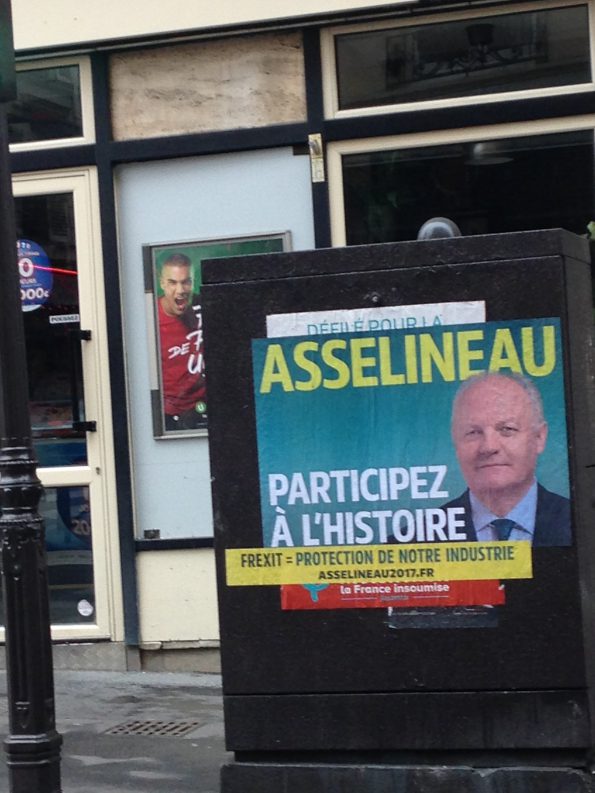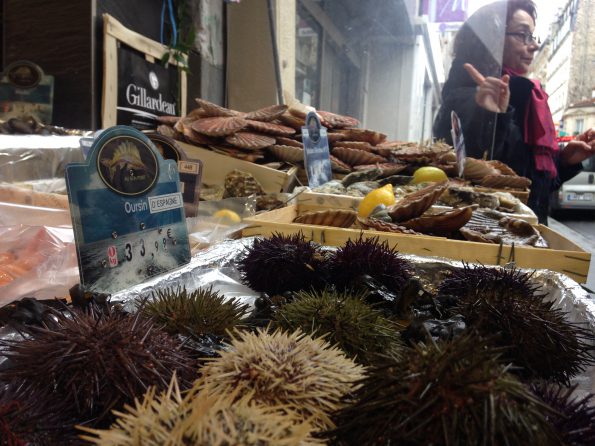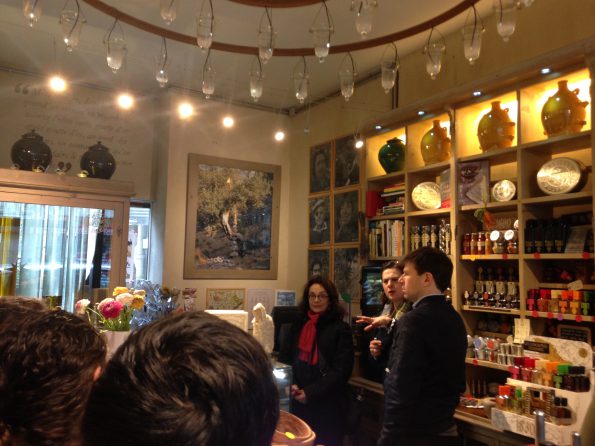Today, the class made its way down the Rue de Martyrs, the site and subject of Prof. Sciolino’s latest book. But before we reached the lively and historical street, we ate buttery croissants around the corner from our luxurious hotel and across the street from a billboard. The billboard promotes François Asselineau, presidential candidate for the political party he founded, the Popular Republican Union (UPR). “Participate in history,” the billboard demands. “Frexit = Protection of Our Industry.” As we sipped café au lait at a small Parisian boulangerie, the billboard reminded us of the tense political climate in France right now. Asselineau’s proposal to remove France from the EU shows that the charm we find in traditional Paris for many conservative French is something to be protected from outsiders. Along with the sweet charm of historical Paris comes xenophobia and harmful French exceptionalism.

A man in a black hoodie walked by the billboard. The back of his sweatshirt bore a familiar mark: the word “Bai” imprinted in white, with the outline of a small leaf dotting the ‘i’. Bai water is a flavored drink infused with antioxidants. Creators of the drink use the overlooked coffee fruit – the berry that surrounds the coffee bean – to make a drink that is sweet, rich in Vitamin C, and available in flavors that range from Costa Rica Clementine to Ipanema Pomegranate. The company was founded just eight years ago in Princeton, NJ. As a Princeton native, I watched with excitement as the drink spread from the shelves of the local natural foods grocery store to Whole Foods locations in Manhattan. A person in a Bai sweatshirt walking on the Paris streets is testament both to the Princeton company’s quick success and the power of a global economy.
On the Rue des Martyrs, we entered a number of small shops. Each specialized in a single product or family of products: cheese, pasta, fruit, seafood, rotisserie, pastries, books. The exceptional quality of the products showed the power of craft specialization. One person asked, “Why don’t we just do this in the U.S.? It’s clear that this is so much better.” As it turns out, the government has designated this street as artisanal. This means that any time that a shop goes out of business, another artisan business must take its place. The charming arrangement of single-product shops does not just come about naturally. Rather, governmental design and regulation maintains this traditional commercial stretch.

As we entered a newer store specializing in olive oil, Maison Bremond 1830, it became clear that modern aesthetics had invaded the artisanal business model. While some patisseries and poissonneries looked like they came right out of a 1950s photograph, this shop had a modern design. The business owners had developed a brand easy to promote—one of earthy colors, wooden textures, and sans serif typeface. A few storefronts down, a pastry shop sells madeleines, the small, traditional French cake. The pastries are as old and French as the country itself, yet there are only fifteen or so visible through the display case, laid out equidistant from each other. The menu is short, the options displayed in an unassuming black font against a vibrant pastel background. A pair of tourists occupies one of the four tables; the rest are empty.

Though many older artisan shops thrive, these newer stores mark a change. The quaint charm of a fishmonger weighing the scallops for tonight’s dinner may not always be enough. These new shops infuse the traditional business model with modern business principles of branding and minimalist design.
